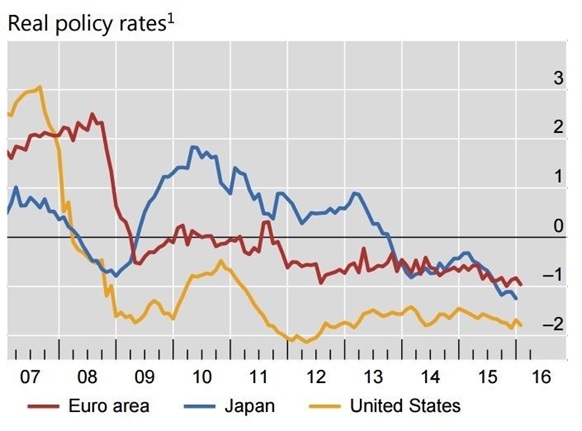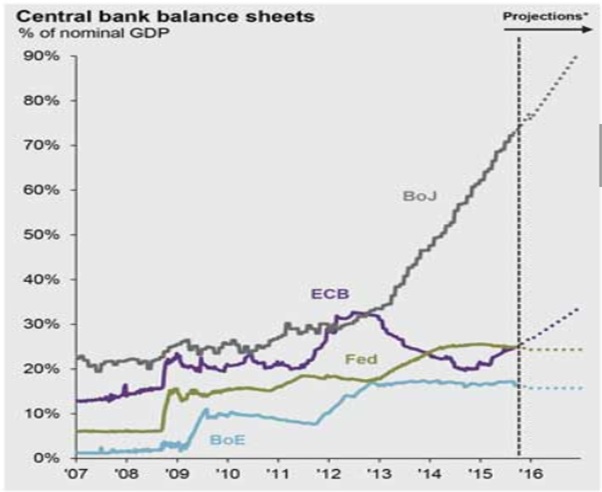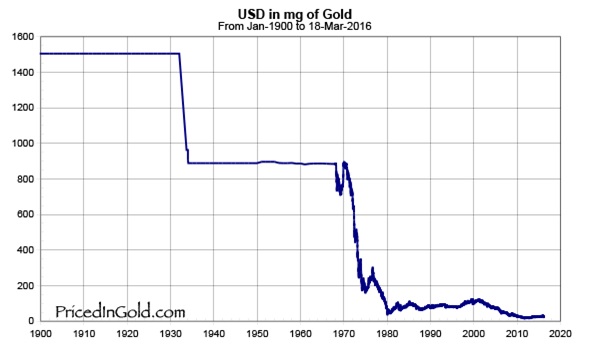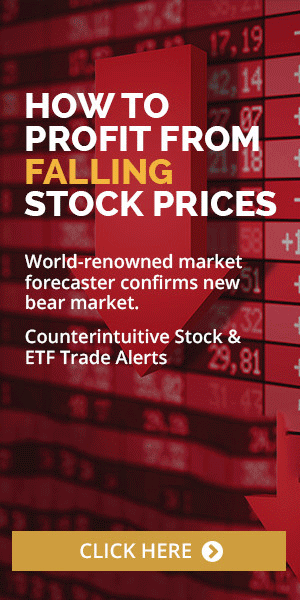The Only Safe Haven Left In The World Is Gold

 The Central Banks around the world are resorting to measures never before seen in history. For thousands of years, the boom and bust cycle has been part of a natural reoccurring business economic cycle. The economy autocorrects itself by punishing the excesses and rewarding prudence.
The Central Banks around the world are resorting to measures never before seen in history. For thousands of years, the boom and bust cycle has been part of a natural reoccurring business economic cycle. The economy autocorrects itself by punishing the excesses and rewarding prudence.
Nonetheless, since the last financial crisis, the central banks around the world have been attempting to avert this cycle by artificially supporting the economy and the markets, using various financial engineering tools. But they have not been able to solve the problem; they are only postponing the inevitable. These cycles cannot be eliminated, only possibly deferred by a few years here and there.
After the dotcom bubble burst, the FED embarked upon an easy monetary policy which encouraged subprime lending, finally ending in a financial crisis. Since 2009, the FED maintained a zero interest-rate policy until December 2015, when they increased rates by 25 bps. Technically, real policy rates are still below zero, as shown in the chart below.
Surprisingly, the policy makers of the Eurozone, Japan, the U.K., and China also copied the FED's quick-fix methodology, leading to the same result worldwide.

Real policy rates are determined by nominal policy rate less the consumer price inflation excluding food and energy. For Japan, core inflation excluding energy and food are adjusted for the consumption tax hike.
All these years of easy monetary policy have led to inflated assets all around the world. Vikram Mansharamani, a lecturer at Yale University, told CNBC, "I think it all started with the China investment bubble that has burst, and that brought with it commodities, and that pushed deflation around the world, and those ripples are landing on the shore of countries literally everywhere. I mean, we've got a bubble bursting (I would argue) in Australian housing markets — that is beginning to crack; South Africa — the whole economy; Canada — housing and the economy; Brazil… we can keep going on and on."
Did the central banks only resort to reduction of interest rates? No - they also resorted to massive money printing, as well. Since the financial crisis, the total debt of the world has increased dramatically, as shown in the chart below.

Considering the easy monetary policy in the world and the amount of money printed, one would assume inflation to be skyrocketing and growth to be higher. However, the reality is far from that. Most nations are struggling to ward off deflation and avoid a recession, which means that the central banks have not been able to achieve their objective.
This has led a few central banks to push rates into the negative territory for the first time ever. It started with the ECB and has now spread to Sweden, Switzerland, and Japan. As the negative rates have not achieved their objective, the ECB and Bank of Japan are contemplating pushing rates deeper into negative territory. Even the FED had considered this, when Chairwoman Yellen recently said, “They are studying it closely in order to use it, if needed in the future.”
There are a number of experts who believe that the current low-inflation and low-growth environment is due to the wrong monetary policy of the central banks. Mark Carney, Governor of the Bank of England, recently said, "Negative interest rates will only help to perpetuate a world of lower rates and slower growth, and are a signal that central bank monetary policy options are now severely limited," as reported by The Week.
The world is losing confidence that the central banks led by the FED will be able to counter any crisis in the near future. This was evident in the recent market crash, even after announcements of further easing by the ECB and negative interest rates by the Bank of Japan.
At the present, the US Government is clinging to a sizeable hoard of gold buried at Fort Knox. In 1971, the US Government suspended gold payments and made the most important and most stable currency, the U.S. dollar to take the place of gold. The world has been on a dollar standard ever since then. Since 1971, the American dollar has lost almost 70 percent of its purchasing power - and is losing more every day. It is likely that the dollar standard will disintegrate as foreign investors lose their confidence in the U.S. dollar.

For the federal government, the dollar standard has been a magical guide to spending and soaring debt. It released the FED from the shackles of gold and set it free to finance federal deficits regardless of their size.
When the central banks fail, investors move towards different assets perceived as safe havens. The U.S. dollar, the Japanese yen, and the Swiss franc have been considered to be safe havens in the past, but not anymore. Famous investor, Jim Rogers, calls the U.S. dollar "the most flawed currency". The yen is a ticking time bomb, considering the unmanageable debt of Japan and the actions of the Swiss Central Bank led to large bankruptcies in January 2015.
This brings us to the final safe haven, which has stood the test of time - gold. It has maintained its value during the last five-thousand years. Moreover, the current rise in gold during the market collapse is proof that its safe-haven status is intact. Gold rose more than sixteen percent in two months on the notion of a financial crisis. Imagine how high gold will go when the real crisis hits the world economies. Gold is money.
Deficits force the FED to generate even more money and credit, which, in turn, weaken and erode the dollar's trustworthiness in the eyes of the world. Its present weakness toward many other currencies, such as the euro, the Swiss franc, and the Japanese yen, is an early symptom of the erosion. No other currency can conceivably take the place of the American dollar. They all suffer seriously from the same ideological malady; they are the creation of political concern and authority. Whatever we may think of gold today, it always looms in the background, beckoning to be used as money, as it has been since the dawn of civilization.
Gold is still more than thirty percent below its highs. As advised in our last article, traders and investors should purchase a percent of their portfolio in gold for the long run and can possibly time a pullback, which I expect to happen in the next few weeks, when it drops to levels of $1,150-1,190 per ounce.
Everybody I talk to who is holding unprecedented cash positions is scared and does not know what to do. They believe the only way to make money right now is to play the stock market. This is an illusion as all hope in a new bull market that will not be realized. We have just experienced the third largest bull market in history, and what goes up, typically comes back down to some extent.
How high can gold go? I believe it can go as high as $8,000 per ounce during a full-blown crisis. With a limited downside risk and huge profit potential, readers should buy gold.
I currently own gold and plan to buy more in the coming weeks. But I should mention that gold, silver, and miners are not the only way to profit from the pending bear market in stocks and the economy overall. There are several other opportunities that are very simple to take advantage of using ETFs and have potentially more upside potential.
Believe it or not, it's happening to gold.


















